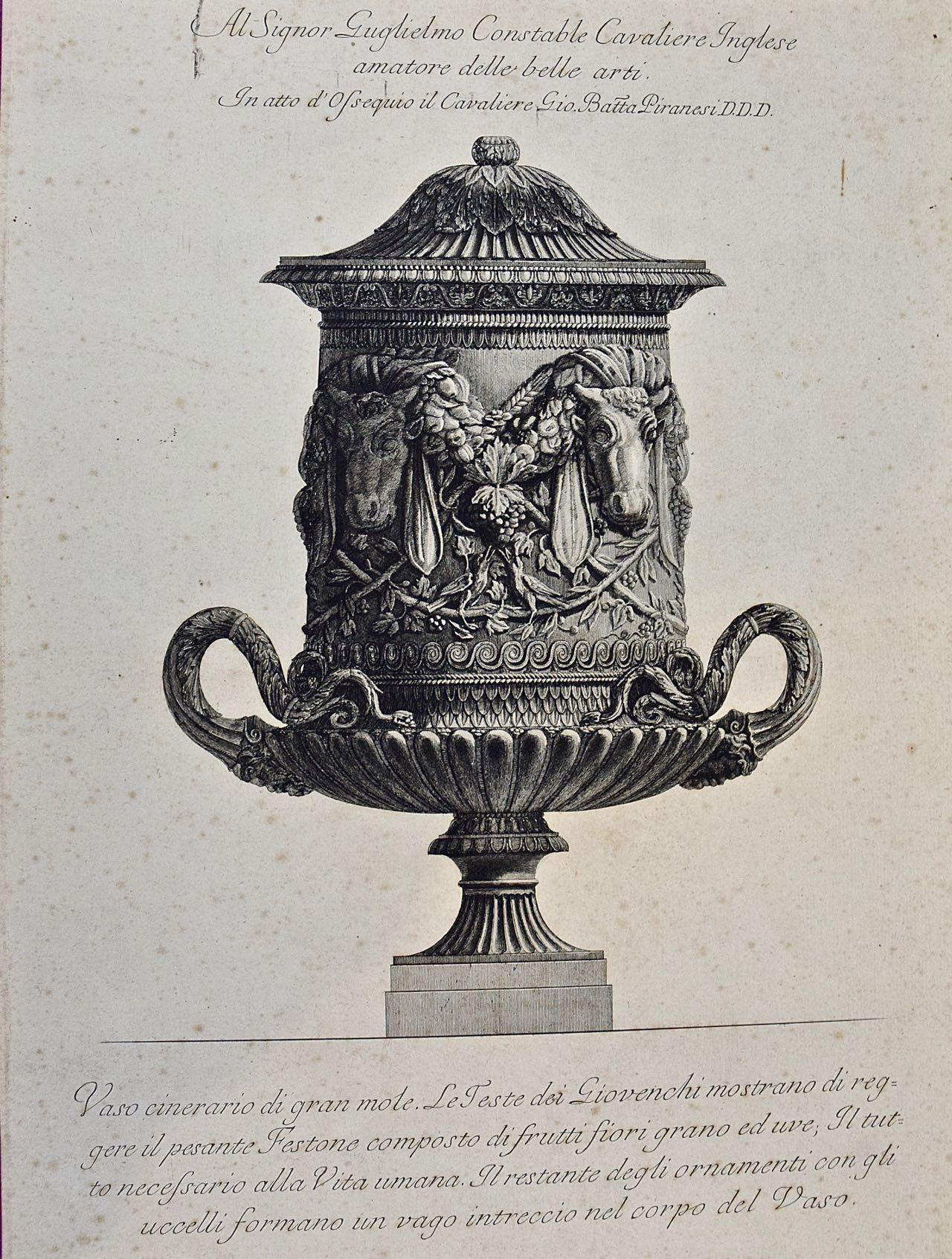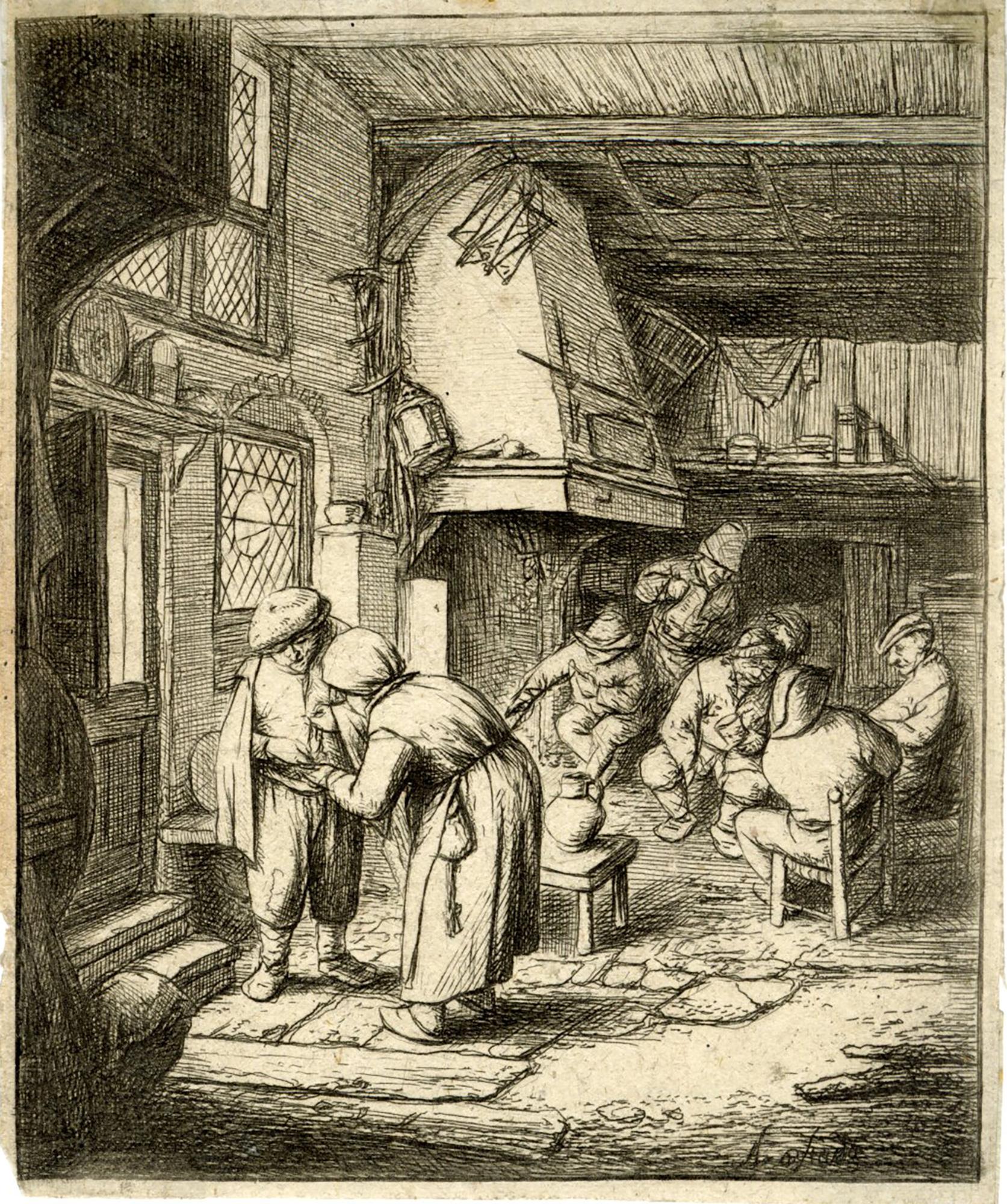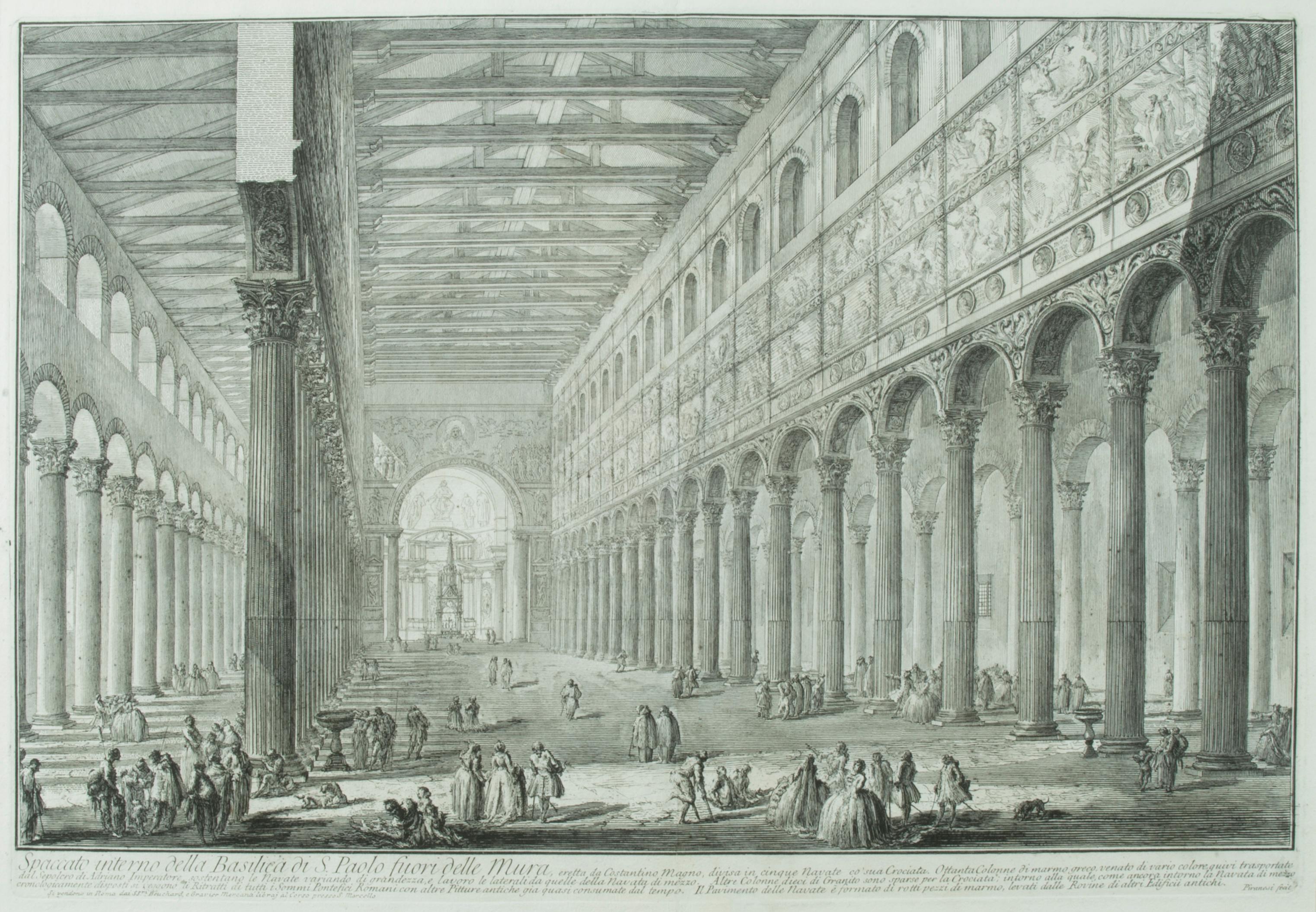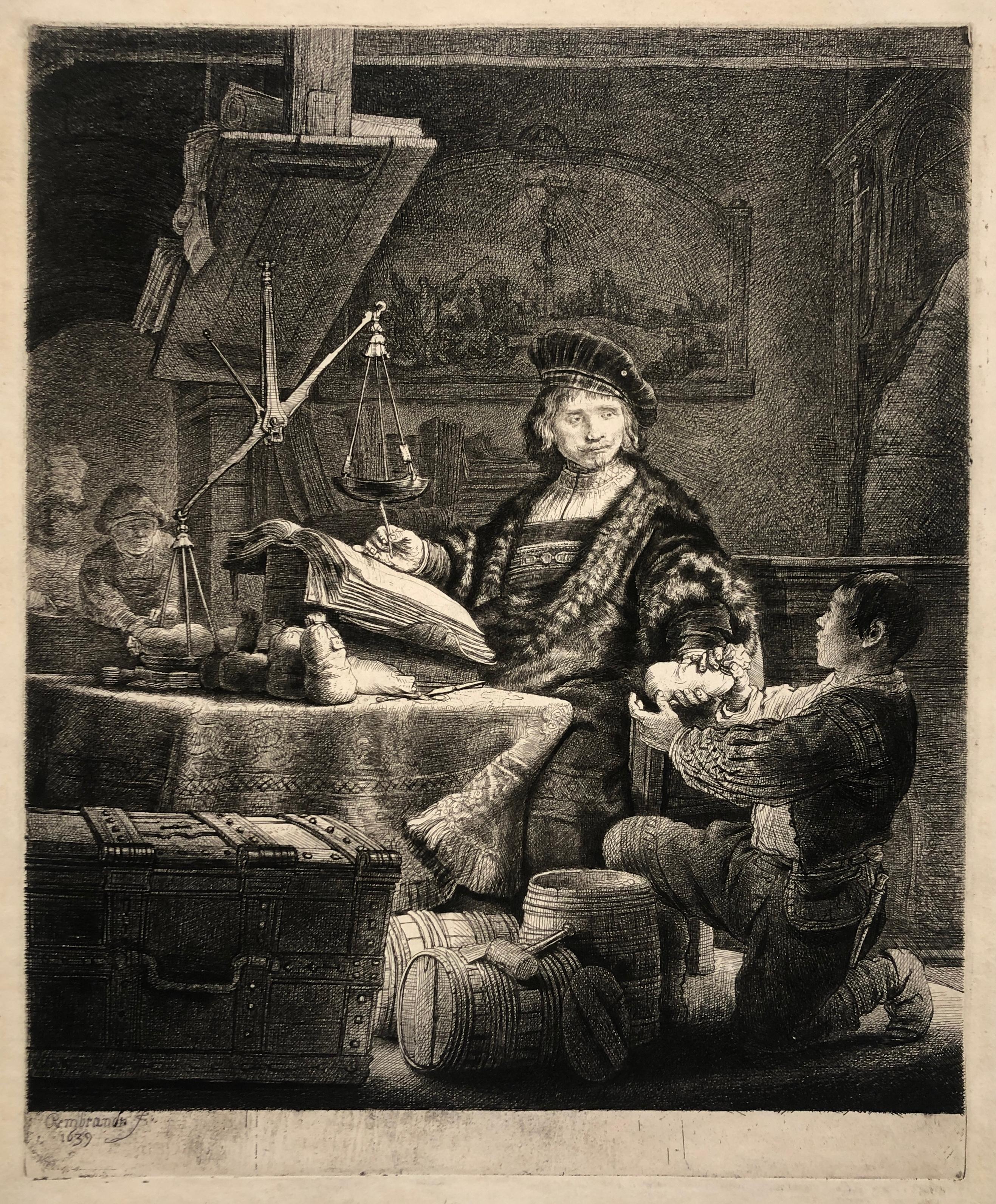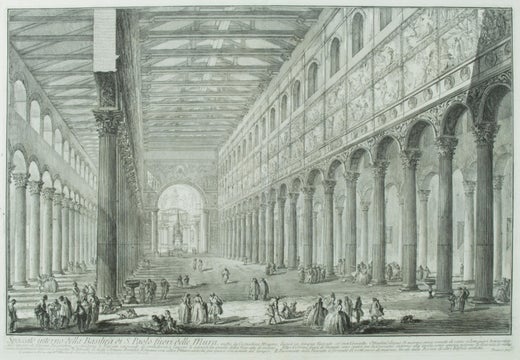Items Similar to The So-Called Tempio della Tosse, Near Tivoli. Interior Upright
Want more images or videos?
Request additional images or videos from the seller
1 of 9
Giovanni Battista PiranesiThe So-Called Tempio della Tosse, Near Tivoli. Interior Upright 1764
1764
About the Item
The So-Called Tempio della Tosse, Near Tivoli. Interior Upright (Veduta interna del Tempio della Tosse)
"Temple of the Cough"
Etching, 1764
Signed in the plate
From: Vedute di Roma, Plate 118
A Roman edition
Watermark: Fleur-de-Lys in a double circle
This building was depicted in a watercolor by J.M.W. Turner, 1819
Condition: Good/Excellent condition
Centerfold (as usual for Piranesi print from albums)
Bright snappy impression
Plate/Image size: 24 3/4 x 18 1/4 inches
Referrences: Focillon 775
Wilton_Ely 203
Hind 70 ii/V
"the so-called Tempio della Tosse (Temple of the Cough), believed to be the vestibule of a Roman villa. The ruin is situated near the Santuario di Ercole Vincitore (Sanctuary of Hercules Victor), formerly known as the Villa of Maecenas"
Courtesy: Tate
Regarding Vedute di Roma
"By 1747, Piranesi had begun work on the Vedute di Roma, and he continued to create plates for this series until he died in 1778. Piranesi’s Vedute, which overshadowed competitor’s views of Roman landmarks through compelling compositions, strong lighting contrasts, and dramatic presentation, shaped European conceptions of present day Rome. This influenced European thought to such an extent that Grand Tourists, who had come to know Rome through Piranesi’s prints, were recorded as being disappointed on their first encounter with the real thing.39 The views were intended as tourist souvenirs and, from their instant popularity, Piranesi had obviously judged the market well. His early sites include obvious popular sights, such as Piazza della Rotonda and the Sepolcro di Cecilia Metella. The first thirty-four views were published in a single volume and entitled Le Magnificenze di Roma. In his first views, the monument or subject was drawn from a distance so that it was clearly set in its context. The little figures present at the ground level are the everyday people and visitors in contemporary Rome. As represented in the “Veduta della Piazza della Rotonda,” Piranesi, clearly contorting perspective, etched an exaggerated and extended view of the Rotonda, unfocused on a specific aspect of the scene. His later views featured heavier line, a sublime eye, and more dramatic perspectives. They also specifically concentrate on a monument, like the “Veduta del Ponte Salario,” or ruin instead of portraying a sweeping view of Roman landscape. These changes could possibly be a response to market demand and what Grand Tourists wanted to see in their vedute, or it could be a personal style change as Piranesi became intrigued by the idea of the sublime. Nevertheless, these views of Rome firmly established Piranesi’s reputation and gave him the initial financial stability that enabled him to tackle grander themes. Moreover, Piranesi’s interest in ruins was genuine antiquarian desire to preserve and record.40 Piranesi was able to focus in on his awareness of what was noble and magnificent and gain a sense for the sublime in the architectural tradition of Rome. Piranesi’s lifelong obsession with architecture, past and present, was fundamental to his genius. His etched plates contained remarkable imagination and a practical understanding of ancient technology. They created a perception of antiquity lasting to our own time."
Courtesy Wellesley University
- Creator:Giovanni Battista Piranesi (1720-1778, Italian)
- Creation Year:1764
- Dimensions:Height: 24.75 in (62.87 cm)Width: 18.25 in (46.36 cm)
- Medium:
- Movement & Style:
- Period:1760-1769
- Condition:
- Gallery Location:Fairlawn, OH
- Reference Number:
Giovanni Battista Piranesi
Piranesi was born in Venice in 1720 and died in Rome in 1778. He was the son of a stone mason and was trained as an architect. After a slow start he eventually achieved great success as an architect, archaeologist, artist, designer, collector, and antiquities dealer. His mission was to glorify the architecture of ancient Rome through his engravings and etchings. His highly dramatized prints often depict imaginary interiors and frequently include figures in mysterious activities, who are dwarfed by the magnitude of their monumental surroundings. Piranesi's style greatly influenced the neoclassical art movement of the late 18th century. His dramatic scenes inspired generations of set designers, as well as artists, architects and writers. His prints have continued to increase in value to institutions and collectors.
About the Seller
5.0
Recognized Seller
These prestigious sellers are industry leaders and represent the highest echelon for item quality and design.
Platinum Seller
These expertly vetted sellers are 1stDibs' most experienced sellers and are rated highest by our customers.
Established in 1978
1stDibs seller since 2013
716 sales on 1stDibs
Typical response time: 1 hour
Associations
International Fine Print Dealers Association
- ShippingRetrieving quote...Ships From: Akron, OH
- Return PolicyA return for this item may be initiated within 10 days of delivery.
More From This SellerView All
- S. Paolo Fuori Le Mura (Vedute della Basilica di S. Paolo fuor della mura)By Giovanni Battista PiranesiLocated in Fairlawn, OHS. Paolo Fuori Le Mura (Vedute della Basilica di S. Paolo fuor della mura) Etching, 1748 From...Category
1740s Old Masters Interior Prints
MaterialsEtching
- La Negresse (The Negress)By Louis LegrandLocated in Fairlawn, OHLa Negresse (The Negress) Etching & drypoint, 1909 Unsigned (as issued in the portfolio) From the album "Les Bars" (8 plates plus cover illustration) Editi...Category
Early 1900s Art Nouveau Interior Prints
MaterialsEtching
- Actresses in Their Dressing RoomsBy Edgar DegasLocated in Fairlawn, OHActresses in Their Dressing Rooms etching & aquatint, 1879-1880 Unsigned as usual for all canceled plate impressions Reference: Delteil 28, Shapiro 50 vi/vi with the cancelation line...Category
1870s Impressionist Interior Prints
MaterialsAquatint
- The Art of Conversation (Three characters on...)By Marcel GromaireLocated in Fairlawn, OHThe Art of Conversation (Three characters on...) Etching, 1958 Signed in pencil lower right: “Gromaire” (see photo) Edition: 110 (18/110) see photo Printed on RIVES paper Publisher: ...Category
1950s Cubist Interior Prints
MaterialsEtching
- Gaiety BurleskBy Reginald MarshLocated in Fairlawn, OHGaiety Burlesque Etching, 1930 Unsigned (as usual for the Whitney edition); Numbered in pencil lower left; Blind stamp of the Whitney Museum (WM) lower right Edition: 114, regular ed...Category
1930s American Modern Interior Prints
MaterialsEtching
- The Woman and the StreetBy Marc ChagallLocated in Fairlawn, OHThe Woman and the Street Etching, 1927-1930 Signed in the plate lower right corner (see photo) From: The Fables of La Fontaine, Plate 84 From the deluxe portfolio edition of 40 examples, printed on japan nacré paper Printed by Maurice Potin, 1927-1930 Published by Tériade, éditeur, Paris, 1952 Reference: Johnson 174 Condition: Tape stain top center recto from pervious hinging. Image/Plate size: 11 3/4 x 9 1/2 inches Sheet size: 15 1/8 x 11 1/8 inches The Women and the Secret There's nothing like a secret weighs; Too heavy 'tis for women tender; And, for this matter, in my days, I've seen some men of female gender. To prove his wife, a husband cried, (The night he knew the truth would hide,) 'O Heavens! What's this? O dear...Category
1920s French School Prints and Multiples
MaterialsEtching
You May Also Like
- Scène de Bistrot - Unknow Artist After Adrian Van Ostade - 18th CenturyLocated in Roma, ITImage dimensions: 15 x 12 cm. Scène de bistrot is a black and white etching with burin interventions on paper realized by an anonymous artist, after the Flemish artist Adrian Van Ostade...Category
Early 18th Century Old Masters Figurative Prints
MaterialsEtching
- Ancient Roman Marble Vase: 18th C. Piranesi Etching Vaso Cinerario di Gran MoleBy Giovanni Battista PiranesiLocated in Alamo, CA"Vaso Cinerario di Gran Mole. Le Teste dei Giovenchi mostrano di reggere it pesante Festone composto di Frutti Fiori Grans ed use. Il tuto Necefsario all Vita Umana. Il Restante degl...Category
1760s Old Masters Figurative Prints
MaterialsEtching
- The Peasant Settling His DebtBy Adriaen van OstadeLocated in Middletown, NYEtching on thin, cream laid paper 4 x 3 5/8 inches (100 x 90 mm), with narrow margins, trimmed inside the platemark. Adhesive residue at the top right and left corners, and archival ...Category
17th Century Old Masters Interior Prints
MaterialsEtching
- Church of St. Costanza, Rome: An 18th Century Piranesi Architectural EtchingBy Giovanni Battista PiranesiLocated in Alamo, CAThis is a framed 18th century Giovanni Battista Piranesi etching entitled: "Veduta interna del Sepocro di Santa Costanza, fabbricat...Category
1770s Old Masters Interior Prints
MaterialsEtching
- Jan Uytenbogaert, The GoldweigherBy Rembrandt van RijnLocated in Boston, MABartsch 281, Hind 167 iii/III, Nowell-Usticke 281, iii/III. A fine impression, with burr, as retouched by Baillie in 1792. With an unidentified collectors stamp, verso.Category
17th Century Old Masters Figurative Prints
MaterialsDrypoint, Etching
- The Giant Wheel (Carceri IX), (2nd State)By Giovanni Battista PiranesiLocated in Chicago, ILThis is a second state impression from three states.Category
Mid-18th Century Old Masters Interior Prints
MaterialsEngraving, Etching
Recently Viewed
View AllMore Ways To Browse
Antique So
Antique Style Interior
Used Upright
Antique Interior Prints
Interiors Market
Vestibule Antique
Piranesi Architectural Etchings
Turner Etching
Temple Rome Antique
Turner Plate
Set Of 4 Architectural Prints
Piranesi Roman
Tivoli Print
Roman Souvenir
Circle Judge
Wilton Antique
Piranesi Veduta
Piranesi Views Of Rome

